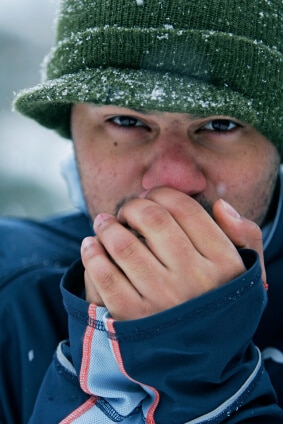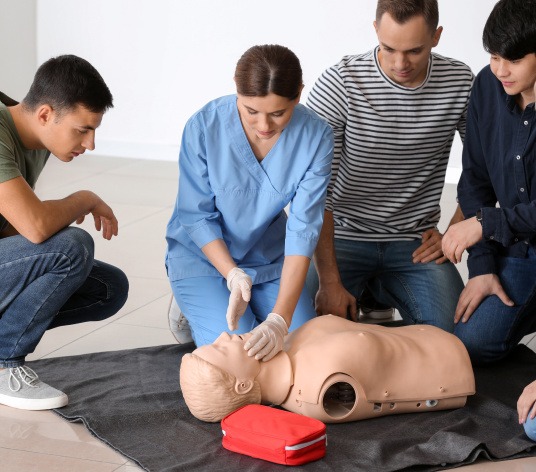Chapter 20: Heat- and Cold-Related Emergencies
Overexposure to extreme heat or cold can cause serious health issues. Heat-related emergencies include heat cramps, heat exhaustion, and heat stroke. Cold-related emergencies include frostbite and hypothermia.
Heat emergencies are often caused by
- Dehydration
- Overexertion or too much exercise
- Wearing excessive clothing in hot, humid conditions
- Prolonged exposure to high temperatures
- Excessive sweating
Cold emergencies can result from:
- Extended time in freezing temperatures
- Wearing wet clothes or not enough warm clothing
- Exposure to cold without heating
- Low body temperature
Each type of emergency has its own warning signs and requires specific care—let’s look at how to recognize and respond to each one.
- Heat Cramps
What to Know: These are the mildest type of heat-related issues and are pretty common if someone’s been working out or doing physical activity in the heat. It usually happens when they sweat a lot and don’t drink enough fluids with electrolytes. Nothing too serious, but it can turn worse if ignored.

Signs and Symptoms: You’ll notice things like muscle cramps or spasms, maybe some dizziness, nausea, and just a wiped-out feeling. They’ll probably be sweating and look uncomfortable.
Responding Right: The best thing to do? Get them somewhere cooler. Loosen any tight clothing and give them something like a sports drink or juice to sip slowly. If they don’t bounce back or start to feel worse, go ahead and call 9-1-1.
- Heat Exhaustion
What to Know: This one’s more serious than heat cramps. It happens when someone spends too long in the heat, especially if they’re wearing heavy clothes or doing physical work. If you don’t catch it in time, it can lead to heatstroke.
Signs and Symptoms: Look for pale or flushed skin, dizziness, weakness, and maybe a headache. The person might feel faint, be sweating a lot, or complain of nausea and cramps.
Responding Right: Get them out of the heat fast. Remove or loosen any clothing, put a cool, wet towel on them, and offer small sips of water or an electrolyte drink. If they don’t improve or start getting worse, it’s time to call 9-1-1.
- Heatstroke
What to Know: This is the most dangerous heat-related emergency. It’s the least common, but when it happens, the body can’t keep itself cool anymore.
Signs and Symptoms: A dangerously high body temperature, confusion, fainting, seizures, muscle cramps, nausea, or vomiting.
Responding Right: Cool them down right away. If you can, get them into cool water up to their chin. Call 9-1-1 immediately—don’t wait.

- Frostbite
What to Know: Frostbite happens when part of the skin freezes. It’s usually the fingers, toes, ears, or nose. The longer someone’s exposed to extreme cold, the worse it gets.
Signs and Symptoms: You might see numb skin, weird colors (like grayish-yellow), skin that feels hard or waxy, or even black blisters in serious cases.
Responding Right: Take off any wet or tight clothing and gently dry the area. Don’t rub it. If there’s no chance of it freezing again, you can warm it up with warm (not hot) water. Be careful and gentle.
- Hypothermia
What to Know: Hypothermia sets in when the body’s core temperature drops too low. It can happen even if it’s not freezing outside, especially if someone’s wet or exposed too long.
Signs and Symptoms: Shivering, slurred speech, a blank stare, slow breathing or pulse, confusion, unconsciousness, and cold and unresponsive body parts.
Responding Right: Move them somewhere warm. Get rid of wet clothes and wrap them in blankets or layers. Call 9-1-1 and stay with them. Don’t leave them alone, even if they seem quiet or sleepy.
This section of your Online CPR/AED Course helps you recognize and respond to temperature-related emergencies with calm, quick action.


